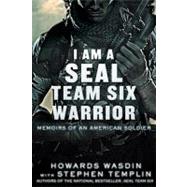
Note: Supplemental materials are not guaranteed with Rental or Used book purchases.
Purchase Benefits
What is included with this book?
DR. HOWARD E. WASDIN graduated with BUD/S Class 143. Awarded the Silver Star following the Battle of Mogadishu, Wasdin medically retired from the U.S. Navy in November 1995 after twelve years of service. He lives in Georgia.
STEPHEN TEMPLIN completed Hell Week, qualified as a pistol and rifle expert, and blew things up during Basic Underwater Demolition/SEAL (BUD/S) training. He is now an associate professor at Meio University in Japan.
The New copy of this book will include any supplemental materials advertised. Please check the title of the book to determine if it should include any access cards, study guides, lab manuals, CDs, etc.
The Used, Rental and eBook copies of this book are not guaranteed to include any supplemental materials. Typically, only the book itself is included. This is true even if the title states it includes any access cards, study guides, lab manuals, CDs, etc.